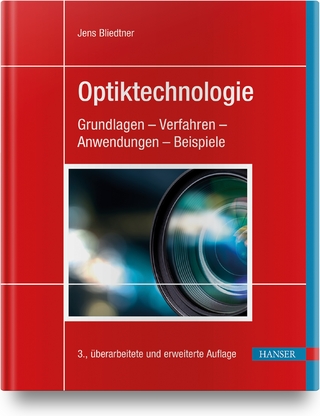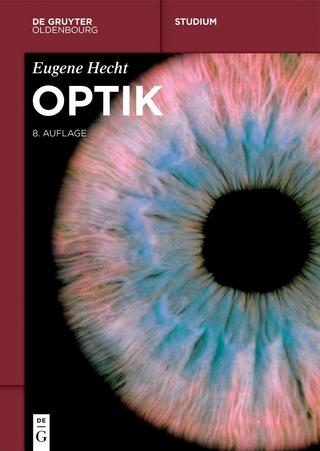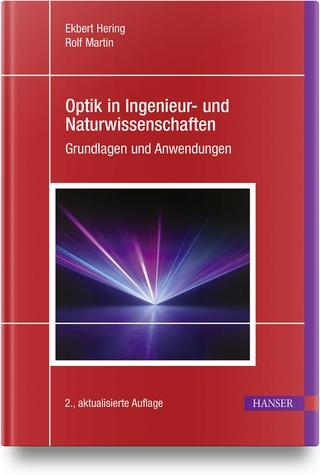
The Physics and Art of Photography, Volume 2
Morgan & Claypool Publishers (Verlag)
978-1-64327-341-9 (ISBN)
This book uses art photography as a point of departure for learning about physics, while also using physics as a point of departure for asking fundamental questions about the nature of photography as an art. Although not a how-to manual, the topics center around hands-on applications, sometimes illustrated by photographic processes that are inexpensive and easily accessible to students (including a versatile new process developed by the author, and first described in print in this series). A central theme is the connection between the physical interaction of light and matter on the one hand, and the artistry of the photographic processes and their results on the other. One half of Energy and Color focuses on the physics of energy, power, illuminance, and intensity of light, and how these relate to the photographic exposure, including a detailed example that follows the emission of light from the sun all the way through to the formation of the image in the camera. These concepts are described in both their traditional manner, but also using very-low sensitivity photography as an example, which brings the physical concepts to the fore in a visible way, whereas they are often hidden with ordinary high-speed photographic detectors.
Energy and Color also considers color in terms of the spectrum of light, how it interacts with the subject, and how the camera's light detector interacts with the image focused upon it. But of equal concern is the only partially-understood and sometimes unexpected ways in which the human eye/brain interprets this spectral stimulus as color. The volume covers basic photographic subjects such as shutter, aperture, ISO, metering and exposure value, but also given their relations to the larger themes of the book less familiar topics such as the Jones-Condit equation, Lambertian versus isotropic reflections, reflection and response curves, and the opponent-process model of color perception. Although written at a beginning undergraduate level, the topics are chosen for their role in a more general discussion of the relation between science and art that is of interest to readers of all backgrounds and levels of expertise.
For nearly 20 years, John Beaver has used old processes to make new negatives, often in ways that can only be realized as a print with digital scanning and printing. This includes his development of the cyanonegative process, innovative work (in collaboration with Teresa Patrick) with instant film, and most recently his development of an accelerated, unfixed printing-out process he calls (perhaps annoyingly) ""Ephemeral-Process photography."" He is Professor of Physics and Astronomy at the Fox Valley Campus of University of Wisconsin Oshkosh, where he teaches physics, astronomy, photography and interdisciplinary courses. He earned his B.S. in physics and astronomy in 1985 from Youngstown State University, and his PhD in astronomy in 1992 from Ohio State University. His published work in astronomy is on the topics of spectrophotometry of comets and gaseous nebulae, and multi-color photometry of star clusters. He has exhibited photographs in many juried competitions in Wisconsin, Ohio, New York, Louisiana, Missouri, Oregon and Colorado, even occasionally winning an award or two (well, two actually). He has had several soloexhibitions, as well as joint shows with artists Judith Waller, Diana Ludwig, Dawn Patel and Teresa Patrick. Beaver has long been involved in art-science collaborations (many with artist Judith Waller) in the classroom, at academic conferences, and in art galleries and planetaria.
Preface
Acknowledgements
Author biography
Part I Energy and photography
1. The nature of energy
2. Energy and exposure
3. Shutter speed and aperture
4. Density and the elements of exposure
5. Metering
6. VLS detector photography
7. Ephemeral-process (EP) and cyanonegative photography
Part II The art and science of color
8. The physical basis of color
9. The physiological basis of color
The psychological basis of color
11. Filters
12. 'Color' in astronomy
13. Color experiments with EP photography
Appendices
| Erscheinungsdatum | 11.04.2019 |
|---|---|
| Reihe/Serie | IOP Concise Physics |
| Verlagsort | San Rafael |
| Sprache | englisch |
| Maße | 178 x 254 mm |
| Gewicht | 333 g |
| Themenwelt | Naturwissenschaften ► Physik / Astronomie ► Optik |
| ISBN-10 | 1-64327-341-8 / 1643273418 |
| ISBN-13 | 978-1-64327-341-9 / 9781643273419 |
| Zustand | Neuware |
| Informationen gemäß Produktsicherheitsverordnung (GPSR) | |
| Haben Sie eine Frage zum Produkt? |
aus dem Bereich


